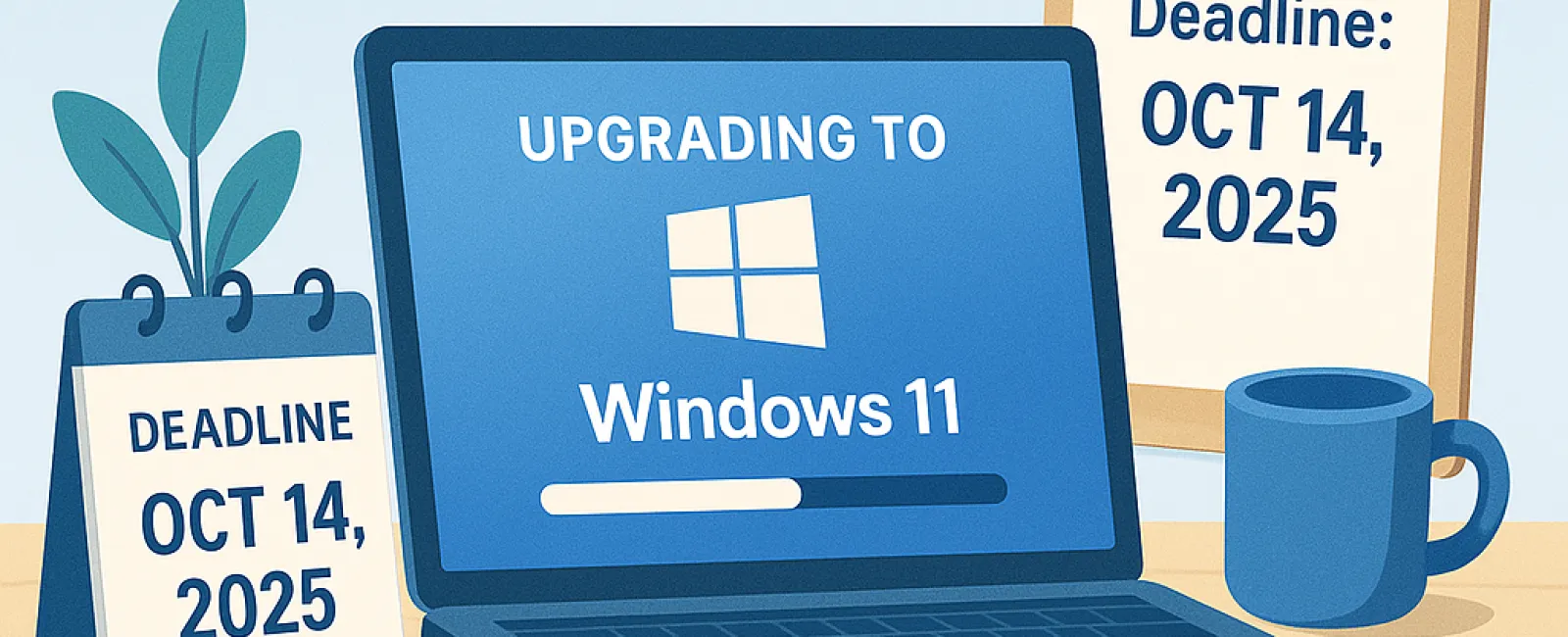June 23, 2025
If you're still running Windows 10 on your business machines, let's get straight to the point: time is running out. On October 14, 2025, Microsoft will officially end support for Windows 10. That means no more security updates, bug fixes, or technical assistance. But what business owners really need to understand is that the cost of waiting isn't just about eventually needing to upgrade; it's about what waiting could cost you right now.
"We'll Deal With It Later" Is An Expensive Strategy
We understand that upgrading every machine in your business isn't exactly a budget-friendly or enjoyable task. It might seem easy to put off—until something goes wrong. But here's what procrastination actually costs you:
1. You're Operating Without A Safety Net
Once Microsoft stops updating Windows 10, every new security vulnerability becomes your problem. Hackers target outdated systems because they are easier to exploit. It's like locking the front door but leaving the windows wide open. One security breach could cost you thousands, or worse, jeopardize your entire business.
2. Software And Hardware Compatibility Issues
Many business applications, including accounting software, CRMs, and industry-specific tools, are already phasing out support for Windows 10. If your systems fail during a critical project or crash in the middle of a client presentation, what would that cost you? It's not just software—new printers, peripherals, and security devices may also stop working properly with an outdated operating system.
3. Lost Productivity
Older systems run slower, crash more often, and frustrate your team. Even small delays add up, reducing efficiency, morale, and your competitive edge. If each employee loses 10 to 15 minutes a day due to technical issues, what does that add up to over a month?
4. Emergency Upgrades Are Always More Expensive
Waiting until your systems fail or your team is locked out doesn't just cause stress—it forces you into emergency spending mode:
- Rush hardware orders
- Expensive IT labor fees
- Business downtime while replacements are made
Planning ahead now can save you a lot of scrambling—and money—later.
5. You're Risking Compliance Violations
If your business handles sensitive data or is subject to regulations like HIPAA or PCI-DSS, using unsupported software could lead to fines or legal trouble. Most regulatory standards require current security measures, and Windows 10 won't meet those requirements after October 2025.
What Smart Business Owners Are Doing Now
They're getting ahead of the deadline by not only upgrading devices but also using this transition to:
- Audit which devices need replacement
- Streamline tools and software
- Strengthen cybersecurity measures
- Plan IT spending more strategically for 2025
How To Make The Transition Smooth
Here's what we recommend:
- Run a compatibility check to see which machines can run Windows 11 and which need replacing
- Audit your applications to ensure essential tools work on Windows 11 or newer systems
- Budget for new hardware now to avoid supply chain delays later
- Partner with an IT provider who can manage the entire transition with no downtime or surprises
Don't Wait Until October To Panic
Waiting until the last minute will cost you more—in money, stress, and missed opportunities. We help small businesses upgrade the smart way: planned, smooth, and optimized for future growth.
Click here or call us at 781-837-0069 to book your 15-Minute Discovery Call and we'll help you identify what
needs upgrading, what can stay and how to build a transition plan that won't
disrupt your business before the deadline.





